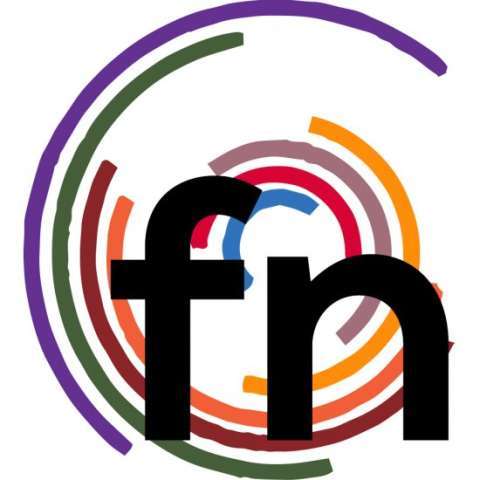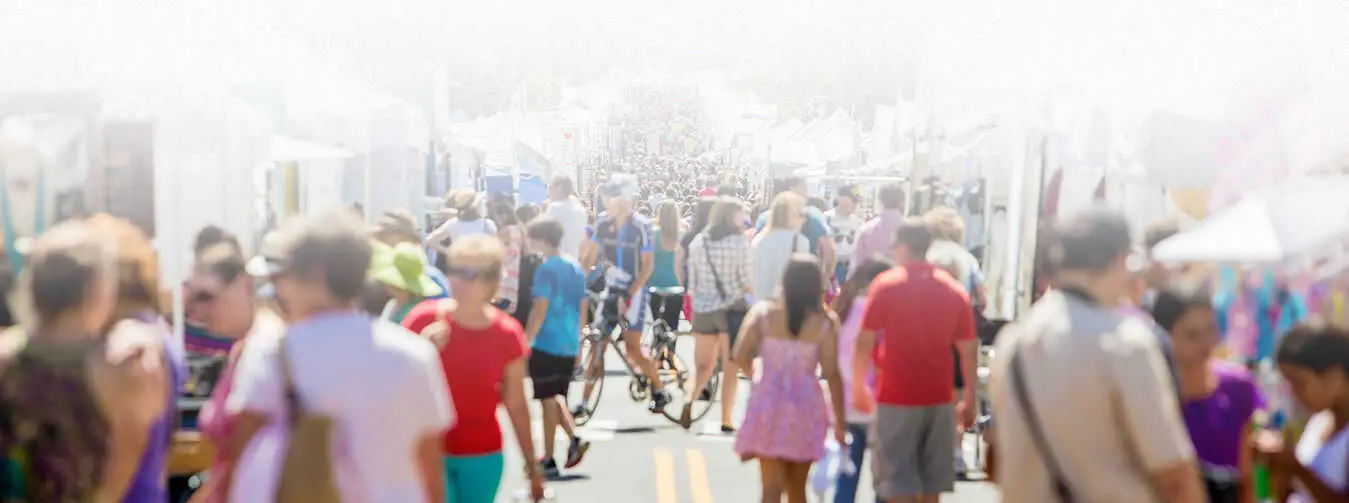12 Tips for Selling More Art in a Recession
by C. Sharp
 Fellow artists and gallery owners share 12 tips for holding your ground during a recession.
Fellow artists and gallery owners share 12 tips for holding your ground during a recession.
Fine art isn’t always easy to sell even when the economy is good. Now with this latest economic downturn, artists everywhere are commiserating about how to ramp up their marketing mojo to help them survive. In some ways it’s not all bad. Crisis is often an opportunity in disguise, challenging artists to focus their energies and to keep at least one eye on the big picture. Here are some suggestions on how to survive the recent economic slump.
1. Start a support group
Misery loves company, and a supportive group of artist friends can really help boost your mood, your sales and your creativity. A watercolor artist friend of mine, Joanne Shellan, recently started a monthly Artist Critique group, where artists gather at someone’s home to critique their latest creations and swap marketing ideas.
Our local Kirkland Art Center (Kirkland, Washington) just started a monthly potluck where professional artists can share some food and artistic support. This is no time to go it alone. Get connected with an existing group or start a support group of your own!
2. Don’t lower your prices
The worst thing you can do as an artist is to reduce your rates when the economy slows. “Many artists panic and lower their prices,” says Seattle gallery owner Patricia Rovzar. “A lot of artists have been ruined by lowering their prices after their rates have already been established by the market and collectors. Our economy ebbs and flows, and we need to ride out this kind of thing.”
Rovzar also suggests that artists and galleries avoid giving deeper discounts to patrons: “If you give a 10-percent patron discount and then suddenly give a 20-percent discount, you can never go back. Buyers then think they can get your art at any price. There’s no longer any set value to it.” Rovzar reminds artists that people tend to turn to art in economic slowdowns. “They don’t vacation as much,” she explains, “and they focus inward and want to be surrounded by things that are beautiful and comforting.”
3. Be active in your community
Don’t hide away in your studio. It’s important to be spending time in the community. Be known as your local “artist in action.” If you can, paint at least once a week outside in your local park or at a community market (check for permit requirements, of course).
Oil painter Ned Mueller is a prime example of an artist always in action. A week doesn’t go by when he’s not doing a demo or painting en plein air somewhere in the Northwest. I myself regularly paint outside in Kirkland on market days, when the crowds are naturally curious about an artist working at her easel. It’s a great way to meet new customers and students or inspire a child! Art stores are particularly interested in artists doing art demonstrations. They help out the artist, and the store sells more art supplies.
4. Think small, sell big
Some artists, such as Kathy Collins, who paints impressionistic watercolor landscapes, are adjusting the size of their originals to accommodate a lower price point. They don’t lower their prices, but they paint some smaller originals to make their art more affordable. Kaewyn Gallery in Bothell, Washington, has a Small Gems show around the holidays to make it more affordable for people to purchase fine art for themselves or as gifts. Parklane Gallery in Kirkland has a very successful annual miniature show that caters to the collector.
5. Learn from local galleries
More galleries are promoting art rentals and layaway plans. Artforte, a Seattle gallery, now rents art and also will extend payments for art over a 12-month period. And the gallery promotes these options to clients. With the credit squeeze on, it makes sense to offer your patrons some alternate payment options without lowering prices.
Gunnar Nordstrom Gallery in Kirkland has a big sign in the front window that reads, in huge letters, “Buy art. It will make you feel good.” Another gallery sign advises, “Diversify your portfolio—buy art!”
6. Develop Internet savvy
More artists are discovering that a way to keep their names out there is to maintain their own art blogs. In a blog you can talk about your latest art project and even put up photos of it. Many artists, such as Kirkland watercolorist Phyllis Ray, have even gone so far as to try out a “painting a day” project, in which she posted a painting for sale on the Internet every day for a period of time.
If you’re not familiar with Web 2.0 concepts—such as blogs, social-networking websites and streaming video—take an Internet technology class at your local library or community college. This is no time to stick your head in the sand and hope computers and the Web go away. On the contrary, they’re here to stay, so you might as well get on board! Have a friend videotape you painting and post the demo on YouTube. You could become the next Internet sensation!
7. Build a patron list
Smart artists build smart lists of patrons. Research shows that your best new sales come from some of your best old customers. Artists are becoming more creative with building their contact lists to announce upcoming shows.
“Instead of just giving someone a business card, I now ask for an e-mail address and offer to send a link to my website,” says photographer Rob Tilley. “Last month I e-mailed someone who saw my work at an art fair—and then that person bought a photo!”
“If you give potential customers just a card, they often forget about it, but when you send an e-mail follow-up, you increase your chances of a sale. Use e-mail alerts or postcards to announce your new show. This saves money on printing and postage as well.
8. Enter and curate shows
Besides sales, building your reputation as an artist is important. There’s no better time than the present to build your résumé by curating a local show. Find a venue and gather a few of your favorite artists, decide on a theme and make it happen.
Joan Archer, who paints and teaches oil and watercolor, put together a show, “The Three Joans,” with two other artists named Joan. The president of Eastside Association of Fine Art, Charlotte Hagen says, “I answer as many calls for artists as I can, while considering travel, time constraints and cost. This practice provides me with a bunch of different venues and sales. I’m on the lists of lots of art organizations, so I get these calls from out of the blue.”
9. Do commission work
Some artists who have sworn off doing commissions are now returning to them. Greensboro, North Carolina-based portraitist Jan Lukens says doing horse commissions is his cash cow. “I’ve made a very nice career out of marketing equestrian portraits to the show-jumping community,” he explains. “Show jumping is the second most expensive amateur sport in the country (yacht racing is No. 1). Despite the problems within the economy for the past couple of years, my client base was the last and the least affected during economic downturns.” Another artist, who wishes to remain anonymous, told me she makes good money doing pet portraits. She says her customers always cry when they see the finished product. Tears of joy, I’m sure!
10. Start an artist studio tour
Gather up a few artist friends. Put some bucks in a kitty. Print some postcards. Put up some banners. Start your own annual studio tour. We did this in Kirkland with great success. (See The Artist’s Magazine’s November 2007 issue.) I think inviting individual people to your studio is a good way to sell art. They feel very special because they get to see where you made your art and talk with you about it. In these high-tech times, people really appreciate the personal elements of art. There isn’t anything more personal than hosting an artist studio sale.
11. Try new and creative venues
Gretchen Michaels sells her reverse-painted acrylic panels at the Red Sky Winery in Woodinville, where she works. For special wine-tasting events she puts up a large exhibition in the tasting room and displays her recent bio and articles about her one-of-a-kind abstract acrylic panels. California acrylic artist Robert Burridge says that his early sales at furniture stores helped him when times were tough.
Rob Tilley, known for his nature and travel photography, says, “Just yesterday I sold a photo that was on display at a local hospital. When they asked me to display there, I thought there would be little to no possibility of selling anything. But sometimes it’s difficult to know in advance what venues will lead to sales. I sold another photo to an acquaintance of mine who asked me to show some of my work at a business meeting. You just never know if or when something is going to sell, so you need to take every opportunity to display your work.”
12. Keep a positive attitude
Sumi painter Kate Jones keeps on her wall these inspiring words attributed to Louis M. Salerno, the owner of Questroyal Fine Art, New York City: “Through the Dark Ages, the great famines, the plagues, world wars and the Great Depression, art has been shown, sold, stolen, collected, criticized, condemned and cherished. In 2003, worldwide art sales were estimated at $5 billion. Nothing is certain but death, taxes, and art—the third certainty.”
 C. (Christine) Sharp is an artist and former CNN journalist who lives, writes and paints in the Northwest. Learn more about her at www.csharpart.com or www.sharpwork.com. This article originally appeared on artistsnetwork.com.
C. (Christine) Sharp is an artist and former CNN journalist who lives, writes and paints in the Northwest. Learn more about her at www.csharpart.com or www.sharpwork.com. This article originally appeared on artistsnetwork.com.


